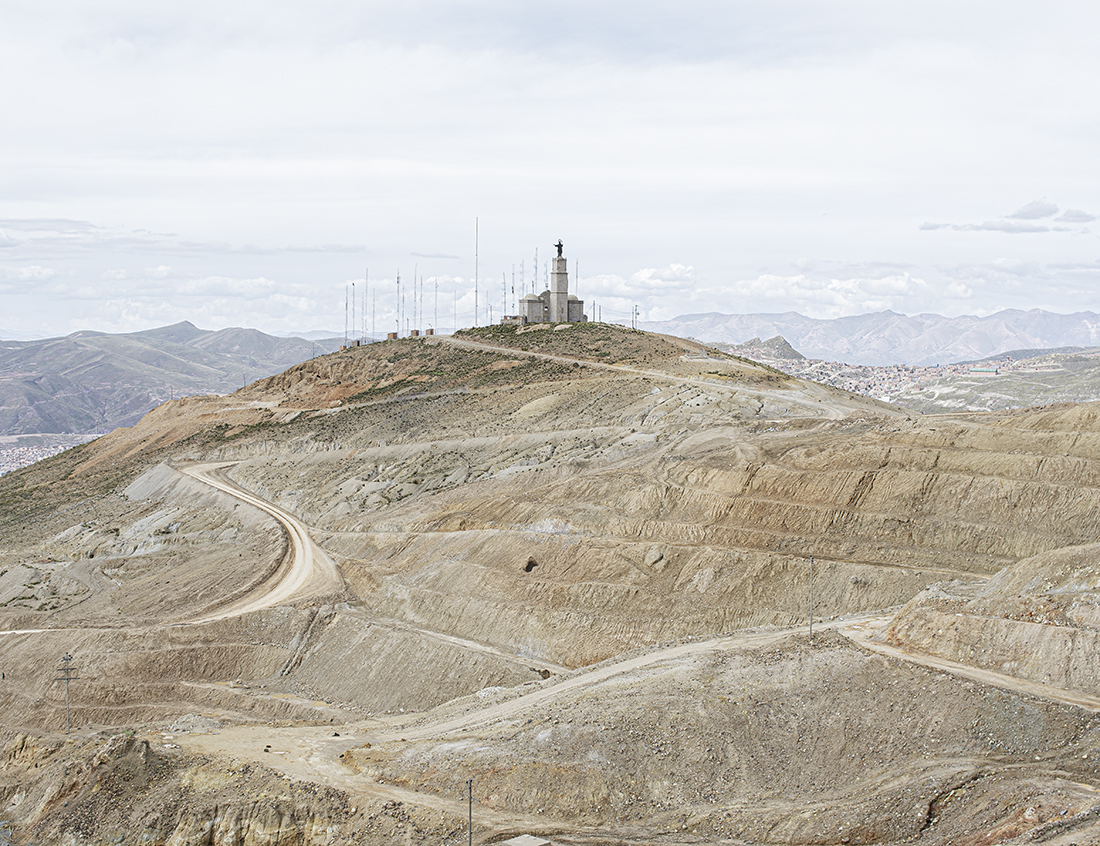Talent of the Year 2020 - FINALIST: Javier Clemente Martinez
Photo © Javier Clemente Martinez
Javier Clemente Martinez
Sumaj Orck'o ("Beautiful hill")
Support this photographer - share this work on Facebook.
The Cerro de Potosí, also known as the Cerro Rico de Potosí, and in the Quechua language as Sumaj Orck'o ("beautiful hill"); named Sumaj Orck'o before its plunder and subsequent exploitation by the Spanish Empire, which began 475 years ago. Now, the name of "beautiful hill" sounds ironic.
The Mines of Potosí were and still remain an important mining center located on the Cerro Rico de Potosí, in present-day Bolivia. Cerro Rico, with more than 4000 meters high and bordered by miles of tunnels of the inexhaustible mines of Potosí, which contributed to the Spanish Empire and all of Europe during the time of the conquest of America, more silver than any other place in the world Its exploitation, alive in the 21st century, was one of the great reasons for the growth of the old continent from the 16th century, , at the cost of the forced labor of indigenous slaves and countless corpses throughout the centuries.
The city of Potosí still lives in the shadow of Cerro Rico. The exploitation of the mines continues to be the base of the local economy and, two centuries after being an independent country, Bolivia has failed to put an expiration date on the galleries where many workers, including children, continue to lose their lives.
About 15,000 workers descend daily in very hard conditions to the Bolivian mines. At more than 80 meters below ground level, the temperature rises to 40 degrees Celsius. Air is an unclassifiable soup where moisture, dust and particles of silver, sulfur and arsenic are mixed. Lethal combination. Few of those who work in these painful conditions exceed 45 years of life expectancy but, even so, men work daily in the bowels of the mountain.
The Potosi mines are some of the oldest in Latin America, still operating for half a millennium.
The mountains also cry: Potosi
Photo 03
Alejandro started working in the mines at age 15, now 10 years later he is still in the mine. He is the only means he knows to support his family.
Photo 09
Women were always considered bad luck for the mine. They have been working alongside men for a long time.
The difference in remuneration for work, poor knowledge of mining work, danger in the galleries (exposed to a series of accidents), and shared beliefs among miners that "work inside mines is not for women" , causes them to feel diminished and undervalued. Thus, a majority choose to leave the galleries and engage in open-pit mining work, practically in clearing or tailings.
Women live in an unfavorable context, the product of a historical process of violence, colonization and displacement.
Women have to fight against the double mistreatment they suffer, as women on occasions and as indigenous on other occasions.
Despite this, women do not present themselves as victims, but rather as defenders of their cultures, their families and their territories.
About author:
Independent Photographer born in Madrid, Spain.
He studied Professional Photography and Visual Arts at the Efti School (Madrid). He also has postgraduate training in Humanitarian Action and International Development Cooperation.
His work focuses on social, environmental and cultural conservation issues.
In recent years he has been working in collaborations with ngos (Spanish and Ecuadorian Red Cross and others) and some organizations, in addition to developing personal projects. With works linked to the indigenous communities of Latin America, especially in the Amazon.
Education
2016-2018. Posgraduate Humanitarian Action. UOC with Spanish Red Cross
2017. Posgraduate International Cooperation for Development . UOC with Spanish Red Cross
2018. EFTI International School of Photography and Cinema https://efti.es/ (Madrid, Spain). Professional Photography and Visual Arts.
Additional Courses
2017. International Humanitarian Law. Spanish Red Cross. 2017. Human Rights. Spanish Red Cross. 2017. Approach to the Logical Framework in International Cooperation. Spanish Red Cross. 2017. Psychological support in emergency situations. Spanish Red Cross. 2017. International Development Cooperation. Spanish Red Cross. 2017. Training for intervention. Spanish Red Cross. 2017. Education for development. Spanish Red Cross.
Member
International Federation of Journalist (IFJ)
Contributor The Everyday Projects
Awards 2020
Finalist Worl.Report Award. Single Shot Award. Festival della Fotografia Etica (Italy)
Finalist Royal Geographical Society (London, UK), Earth Photo Awards 2020.
MIFA The Moscow International Photo Awards 2020. Professional. People - Culture. Honorable Mention
Mercé Rodoreda Contest 2020 (Foto Platja D’Aro, Spain). Winner (Under 35)
Head On Photo Festival 2020 (Sydney, Australia). Category: Portrait. Semi-finalist
6th FAPA Fine Art Photography Awards 2020. Category: Professional. Portrait. Nominee x 2
Photobooks (Publications)
2020. Docu Magazine Issue I. A high quality print and online documentary photography magazine. Focus mainly lies on long-term projects. Collective publication. US Letter, 8.5×11 in, 22×28 cm
# of Pages: 96
2018. “1995. Remembering Srebrenica” Photobook. ISBN: 978-84-09-06879-1 (Spain)

